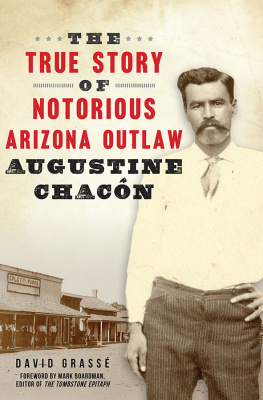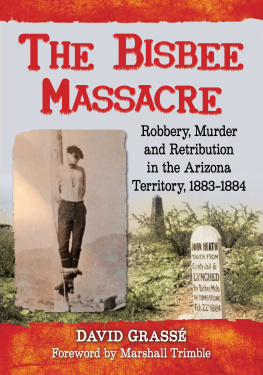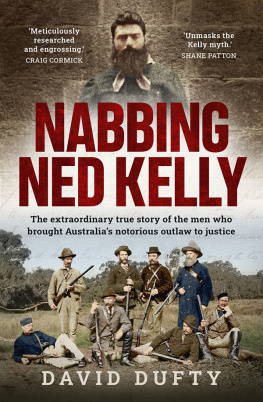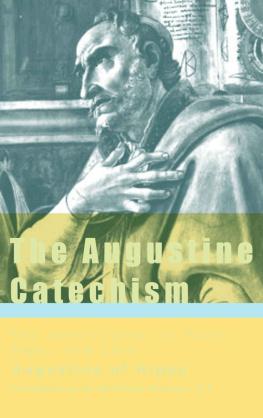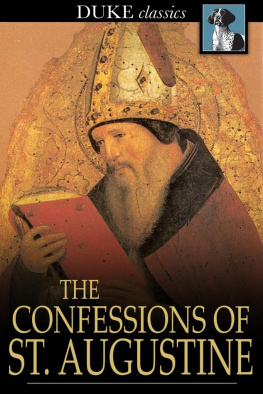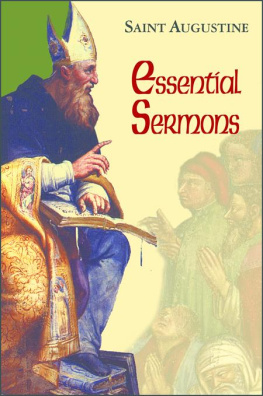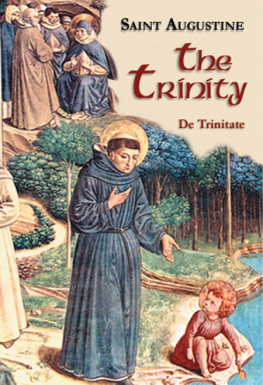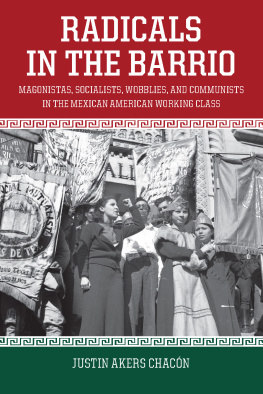
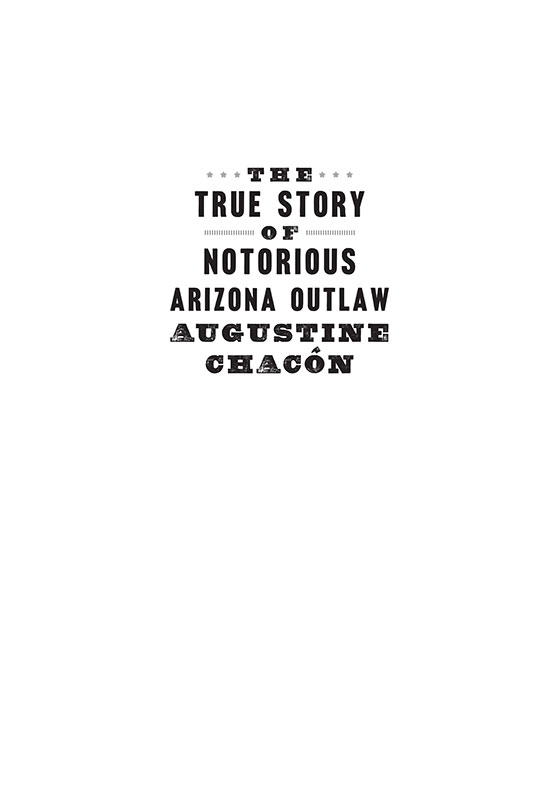

Published by The History Press
Charleston, SC
www.historypress.com
Copyright 2021 by David Grass
All rights reserved
Cover image: Augustine Chacn. Arizona Historical Society, PC 1000, Main Photo Collection, PortraitsChacn, Augustine, #29909.
E-Book year 2021
First published 2021
ISBN 978.1.43967.334.8
Library of Congress Control Number: 2021938513
Print Edition ISBN 978.1.46714796.5
Notice: The information in this book is true and complete to the best of our knowledge. It is offered without guarantee on the part of the author or The History Press. The author and The History Press disclaim all liability in connection with the use of this book.
All rights reserved. No part of this book may be reproduced or transmitted in any form whatsoever without prior written permission from the publisher except in the case of brief quotations embodied in critical articles and reviews.
For all those who are unjustly maligned.
CONTENTS
FOREWORD
When the legend becomes fact, print the legend.
That line from The Man Who Shot Liberty Valance has become almost clich over the years. It could apply to almost every notable character of the Old West. Often, the legends started while the principal was still alive, the creation of liberty-taking journalists who were more interested in good storytelling than in the truth.
And then, over time, others just repeated the tales, not bothering to check out what really did (or did not) happen. Very flesh-and-blood people like Wyatt Earp, Jesse James and Billy the Kid were magically transformed into larger-than-life figures, men whose exploits were greater than those of most normal humansfaster on the gun, nervier in the toughest situations, cannier at the gambling tables, more successful with the ladies and so on.
Mexican bandit Augustine Chacn got that treatment over the decades. Reputedly, he was a brutal and deadly force on both sides of the United StatesMexico border in the years surrounding 1900. He and his gang supposedly ran rampant over southeast Arizona. Some chroniclers claim that Chacn was involved in up to forty-two killings, a remarkable number for anybody in any era. In a nearly Christ-like episode, he was betrayed by a friend and sent to the gallows. There, the outlaw exhibited incredible courage and calm in the face of death.
Its a great story. Just one problem: most of it is pure fantasy. And thats where David Grass comes in. Over the past fifty years, more and more historians have examined the Old West legends and found them wanting. The truth is simpler and, in some ways, less exciting than the legends. The Wyatt Earps and Billy the Kids were real people, who did good and bad and a lot of everyday things that make no difference and deserve little or no notice. Augustine Chacn fits that category as well, as Grass shows in this examination of the bandit.
I wont spoil things before we get to the heart of the matter. But lets just say that Augustine Chacn was the victim of a white newspaper and legal establishment that turned a minor bad man into the embodiment of evil. And then succeeding generations of quasi-historians and storytellers just regurgitated those tales, without checking to see if they were true or not. Not so David Grass. He has taken the time and effort, observing information with a critical eye, to get at the facts. Augustine Chacn was a minor character in turn-of-the-century Arizona Territory. And in presenting the facts, Grass has done everyone a favor. Now we have the history at hand.
Will this book erase all the lies told about Chacn over the past 130 years? No way. But now we can compare them to the facts. Yes, when the legend becomes fact, print the legend. Thats just the way of things. But for those who want a bit more than myth and legend, the truth is out there, discovered and told by real historians like David Grass. This is the true story of Augustine Chacn. No legend, just fact.
MARK BOARDMAN
Senior Editor,
The Tombstone Epitaph
ACKNOWLEDGEMENTS
I would like to take a moment to extend my thanks to the many people who made it possible for me to do the work I do:
Laurie Krill, Ryan Finn, Crystal Murray and the folks at The History Press.
Mark Boardman, senior editor of The Tombstone Epitaph.
Wendy Trakes, Sara Guzman, Laura Blandford and the entire crew of archivists and research librarians at the Arizona State Library and Archives in Phoenix.
Ms. Rachel Black and the staff at the Arizona Historical Society.
Nancy Liliana Godoy, associate archivist of Chicanx Research Collection, Arizona State University Library, Distinctive Collections.
Matt Messbarger, archivist, Arizona State University Library, Distinctive Collections.
Edres Bryant Barney, curator and manager at the Eastern Arizona Museum & Historical Society in Pima, Arizona.
Barb Keely at the Pinal County Historical Society.
Sean Harrington, reference/electronic resources librarian, Ross-Blakley Law Library, Arizona State University.
Ms. Valerie Kittle at the Postal History Foundation, Tucson.
Ms. Kathy Klump at the Sulphur Springs Valley Historical Society.
All those persons who have purchased and read my earlier books, which has had the effect of encouraging me to continue writing these histories of the Arizona Territory and the inhabitants thereof.
And, of course, my sister, Erin, and my mother, Geraldine, who have never wavered in their support of my creative endeavors.
My apologies, as I am certain I forgot someone.
A thing is not necessarily true because a man dies for it.
Oscar Wilde
CHAPTER 1
A DUBIOUS BEGINNING
The Mexican outlaw Augustine Chacn has become something of legendun hombre muy malowith a veritable litany of crimes and depredations attributed to him, most of which are complete fictions. These fictions, which began to envelop Chacn during his lifetime, have continued to be reiterated, as though they were factual, well into the modern era. Like the legend that surrounds the mythic Californio social bandit Joaquin Murrieta that originated with the 1854 novel by John Rollins Ridge, the legend of Augustine Chacn is almost exclusively the invention of contemporary, Anglo-American newspaper editors. The various stories of murder, rape, robbery and other atrocities allegedly committed by Chacn served to elevate him from a common criminal to an outlaw of renowna veritable legend in his own time. Of course, it became necessary, once Chacn had been raised to the status of a near-mythic figure, to make an example of him.
These period tales reflect the underlying xenophobia and racist mindset of the majority of the Anglo-American population in the southwestern territories who believed, steadfastly, in their own moral and cultural superiority. The crimes of Augustine Chacn, though blatant fabrications, served to reinforce the prevailing and pervasive racialist/racist ideas concerning the innate degeneracy of persons of other ethnicities, especially those of Hispanic and indigenous ancestry. The Anglo newspapermen turned Chacn into a villainous archetype, embodying all their racist beliefs about the dissoluteness and depravity of the Hispanic peoples.

Next page
